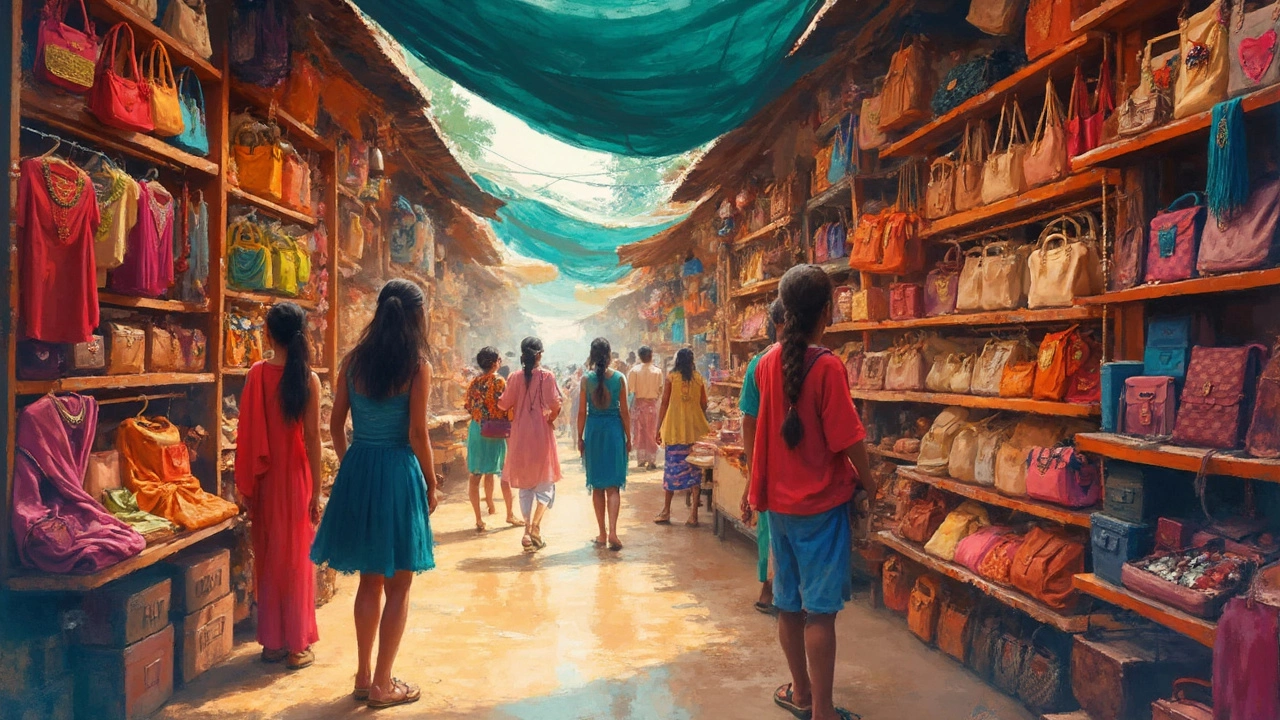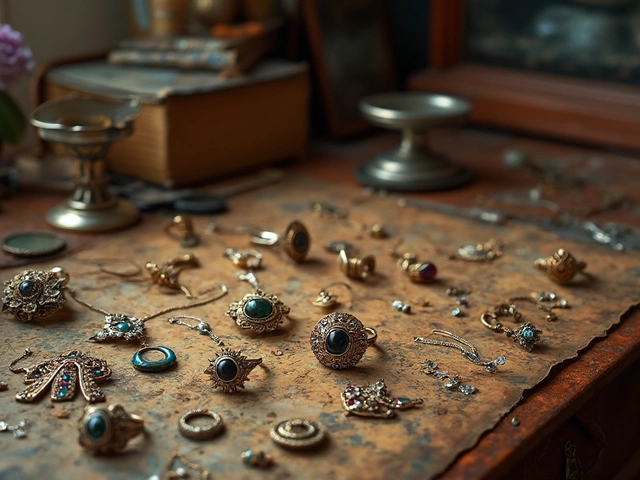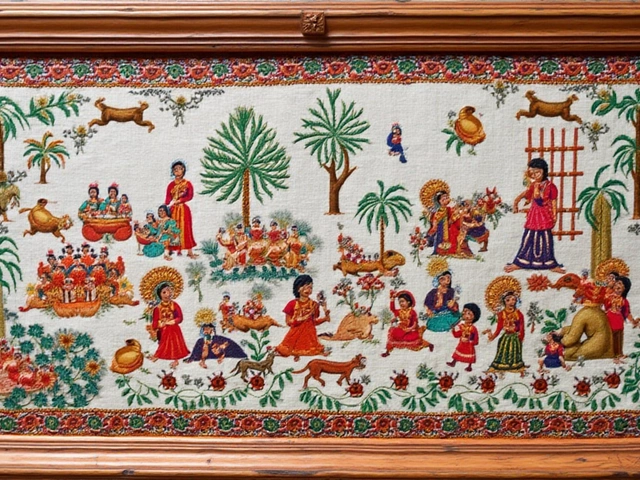
Ever wonder why those glitzy luxury brands don't have such a big fan club in India? It's a bit of a head-scratcher, especially when you consider that India is buzzing with a growing economy and a massive younger generation that's embracing fashion like never before. But there's more at play here than meets the eye.
First off, let's talk about the economic side of things. While the Indian economy is growing, and there's a rise in disposable incomes, it's not like everyone's splurging on high-end brands just yet. For many, it comes down to value for money. Indian consumers are savvy, and they often weigh quality against cost rather than being swayed by brand names alone. This pragmatic approach is deeply rooted in the culture and is a key reason why many folks steer clear of costly luxury items.
- Economic Landscape
- Cultural Influences
- Consumer Preferences
- Accessibility and Distribution
- Perception of Luxury
- Future of Luxury Brands
Economic Landscape
So, let’s break down the economic puzzle that affects the popularity of luxury brands in India. India's economy has been on the upswing, with GDP growth bringing in more wealth across different sectors. People have more money to spend, but this doesn’t necessarily mean they’re rushing to buy the newest designer handbag.
One big reason is economic inequality. While there’s a rising middle class, a significant portion of the population is still getting by on much less. This imbalance means that luxury items, often seen as frivolous, don’t make it to the top of the shopping list for many individuals.
Disposable Income Habits
Now, when folks do have extra money, they prioritize differently. Instead of splurging on luxury accessories, many Indians invest in education, health, and real estate, which are considered more stable and practical. The culture tends to favor savings and sensible spending over the thrill of high-end shopping.
Affordability vs. Luxury
Moreover, traditional Indian retailers offer a great deal of value for money and trust that’s built up over generations. This allows them to compete effectively against pricey international brands. Not to mention, there's a strong push for homegrown brands that resonate more personally with Indian consumers.
Given these factors, it’s clear why global luxury markets often find it tricky to gain a foothold. Sure, there’s curiosity and appeal around luxury brands, but these practical economic realities keep them from becoming mainstream in India.
Cultural Influences
India's rich cultural tapestry plays a huge role in shaping buying decisions, especially when it comes to fashion. The country's traditions, values, and lifestyle choices make a big difference in how people perceive luxury brands.
Value for Tradition Over Brand
Indian culture places a strong emphasis on traditions and familial ties. Many folks love to invest in gold and jewelry that has cultural significance rather than splurging on high-end fashion accessories. Owning a piece of heritage jewelry often trumps the allure of a new designer bag.The Rise of Local Artisans
There's also a strong appreciation for local craftsmanship. With a rich history of textile production and craftsmanship, many Indians prefer supporting homegrown brands and artisans. This love for local artisanship is giving tough competition to global luxury players, as consumers find more value in something handmade with a story.Status Symbol or Practicality?
While in many parts of the world, owning luxury goods is a status symbol, in India, practicality often wins the day. Consumers tend to analyze whether an expensive item truly enhances their lifestyle or not. It’s a mindset where necessity and utility frequently outweigh the idea of owning something merely because it’s a luxury item.Festivals and Occasions
Festivals and weddings are monumental in Indian culture, influencing shopping habits as well. During these times, spending spikes, but it's mostly on traditional wear and gifts rather than international luxury brands. Many families prioritize saving for significant life events over indulgent splurging on luxury goods.Consumer Preferences
When diving into why luxury brands aren’t really taking off in India, it’s crucial to understand the local consumer behavior. Indian shoppers have their own unique set of preferences that aren’t always aligned with what luxury brands have to offer.
One major factor is the country's deep-seated love for traditional craftsmanship and local brands. Many Indians would rather invest in items that reflect their rich cultural heritage than on international luxury labels. This isn’t just about saving money—it's about personal identity and pride in local craftsmanship.
Another aspect is the growing trend towards ethical consumption. More and more Indians are becoming conscious of where their products come from and how they are made. This trend has driven a stronger preference for sustainable and ethical brands, sometimes overshadowing luxury labels known for their high price tags but not necessarily sustainable practices.
Practical Over Prestige
There's also a distinct preference for practicality over prestige. While sure, owning a luxury item has its allure, many consumers opt for functional products that offer good value. For example, instead of spending on a designer handbag, an Indian shopper might choose a brand that offers durability and functionality at a better price point.
Price Sensitivity
Indian consumers are generally price-sensitive, which impacts their purchasing decisions. Even with rising incomes, people want to feel like they're getting their money’s worth. Despite economic growth, luxury often feels like an extra, rather than a necessity or a good investment. In situations like weddings, where big spending is common, consumers might still lean towards more cost-effective options that look just as good as their luxury counterparts.
This doesn’t mean luxury brands don’t have any appeal—it’s just that they need to work harder to fit into what Indian consumers value most: authenticity, practicality, and ethics.

Accessibility and Distribution
Ever wondered how easy it is to get your hands on high-end luxury brands in India? Well, let's just say it's a bit of a mixed bag. One of the bigger hurdles luxury brands face is setting up shop where people can actually reach them. And it's not just about opening fancy stores at swanky locations—there's more to the story.
First off, luxury brands often concentrate their outlets in metropolitan areas. Cities like Mumbai, Delhi, and Bangalore have posh malls that cater to the elite, but what about the vast population outside these urban bubbles? The reach of these brands is quite limited, which means a significant number of potential consumers are left out simply because they don't live near these hubs.
Online vs. Offline Presence
The recent boom in online shopping could have been a game-changer for luxury brands, but even here, there are snags. Not all luxury brands are on-board with e-commerce platforms. Concerns about counterfeits and a lack of that touch-and-feel experience luxury goods often promise are keeping some brands hesitant.
On the flip side, Indians who do shop for luxury online often have to deal with logistics issues. Deliveries can take time, and not all services reach remote or less-developed locations. This can be a turn-off for someone who's spending big bucks on a premium product.
The Power of Distribution Networks
Now, distribution logistics isn't exactly the flashy part of the luxury world, but it's crucial. Some brands are starting to explore tying up with local distributors or using already existing retail giants to boost their presence. However, these collaborations come with their own sets of challenges, often including sustaining brand image and offering the same level of service across the board.
A practical tip for luxury brands wanting to expand in India? Consider investing in pop-up stores in tier-2 and tier-3 cities. They offer a low-risk way to test the waters and understand these markets better. Plus, it gets the brand directly in front of a new crowd.
So, yes, fashion accessories in India have a future of luxury—they just need to figure out how to extend their reach without compromising their grandeur.
Perception of Luxury
In India, luxury brands often face a peculiar challenge: they’re sometimes seen as either irrelevant or out of touch with everyday lives. For many Indians, luxury isn't just about flashy logos or expensive price tags. Instead, it's about craftsmanship, uniqueness, and how well a product fits into their lifestyle.
One of the main factors that shape the perception of luxury in India is the strong cultural emphasis on family and community. While purchasing a luxury item, there is often a sense of duty to prioritize family needs. This shifts the focus from individual splurge on high-end brands to collective expenditures that benefit loved ones.
Moreover, there's a common notion that luxury brands cater primarily to the elite, making them feel exclusive and unattainable for the average consumer. This perception is gradually changing, especially among the younger crowd, but it still holds sway over a large part of the population.
A Nielsen survey pointed out that around 64% of Indian consumers prefer products that offer long-term value rather than luxury labels. This trend highlights that practicality often trumps luxury for most Indian shoppers. Instead of opting for pricey accessories, many prefer well-made, durable items that resonate with their daily lives.
Fashion accessories in India often need to balance tradition with modernity. Traditional wear is still highly cherished, and items that seamlessly blend the two, offering a modern twist to authentic designs, tend to attract more attention.
As the market evolves, luxury brands need to tailor their offerings by connecting with the cultural ethos and understanding the diverse Indian consumer's mindset. This means moving beyond superficial luxury to more meaningful experiences that speak to the heart of what luxury really could mean in the Indian context.
Future of Luxury Brands
What's in store for luxury brands India? The future might be brighter than you think, but it won't come without its challenges and a need for adaptation. As India continues to develop, the dynamics of its consumer market are shifting rapidly.
Adapting to Local Tastes
One of the big hurdles luxury brands face is the need to resonate with Indian consumer behavior. It's not just about introducing a global product; brands need to understand local culture, preferences, and styles. Some luxury names are starting to collaborate with Indian designers or draw inspiration from Indian tradition to capture interest. Tailoring products to suit Indian sensibilities could make a big difference in their popularity.
Embracing Digital Transformation
With the rise of e-commerce, luxury brands have an opportunity to reach more customers than ever. Offering online exclusives, personalized shopping experiences, and using social media can tap into the younger, tech-savvy audience. By enhancing their online presence, brands can break down the barriers of accessibility and widen their reach.
Growing Affluence and Economic Opportunities
India's middle class is ballooning, and with it, there's an increase in disposable income. While these consumers are currently value-conscious, over time, exposure to global trends could shift their preferences toward high-end brands. We've seen similar trends in other rapidly developing countries.
Sustainability and Ethical Practices
The younger generation is increasingly aware of sustainability and ethical fashion. Brands that focus on transparent and eco-friendly practices may win over Indian consumers. This is a crucial consideration that could redefine luxury in the Indian market.
Looking ahead, the potential for the luxury market in India is substantial. This is about more than just prestige; it’s about innovation, inclusivity, and aligning with what matters to consumers. Those who adapt may well find India to be a land of opportunity.


